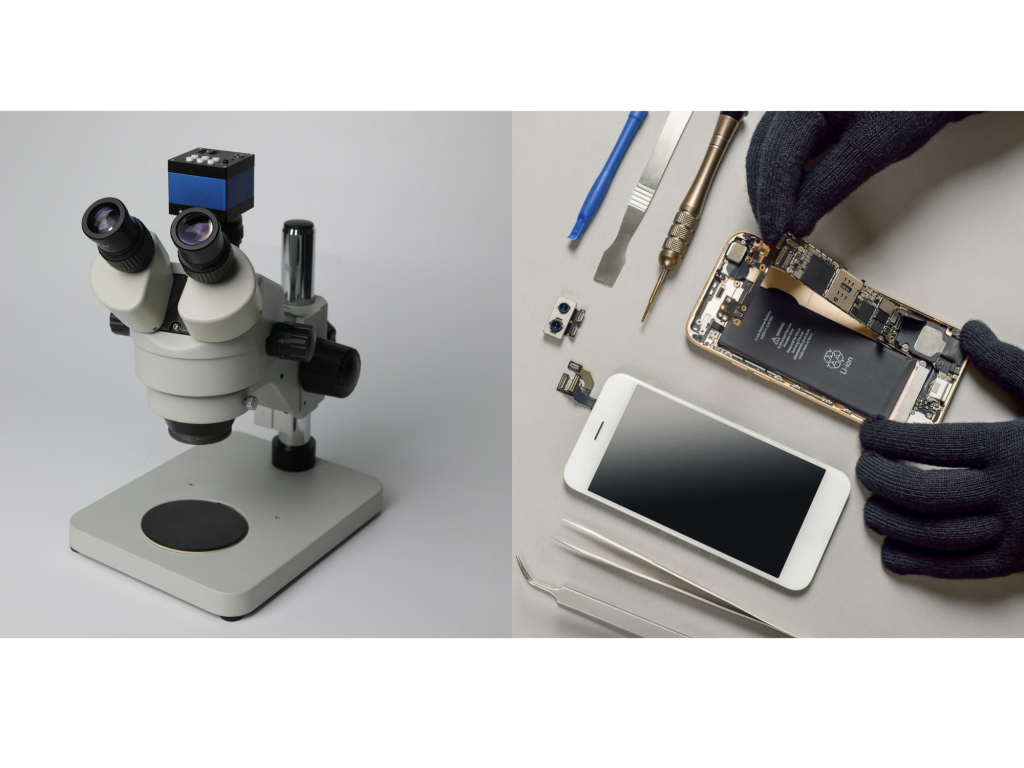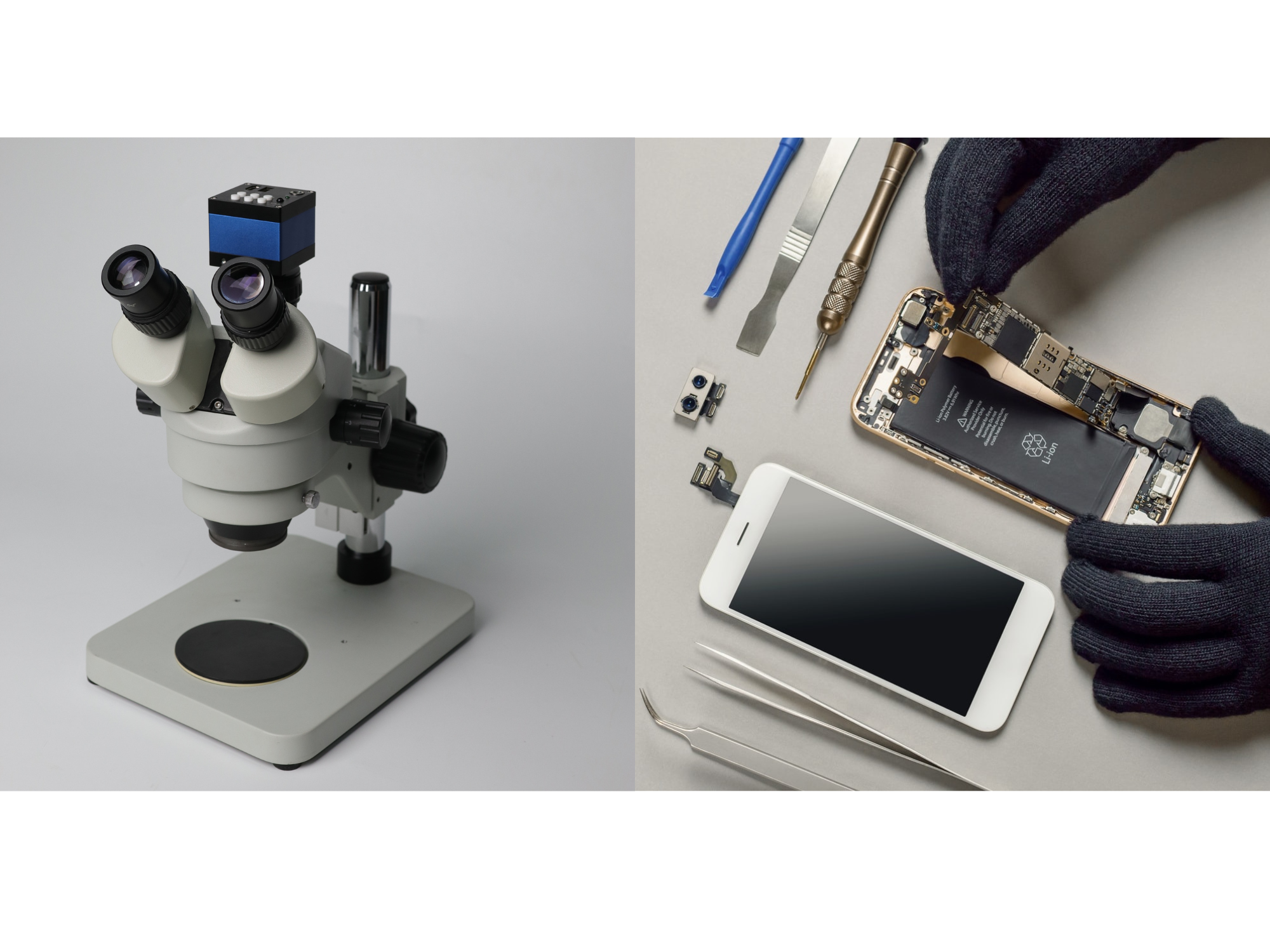
In mobile phone repair, microscopes and microscope cameras are indispensable tools, especially when dealing with tiny components (such as chips, capacitors, resistors, etc.). They can help repair personnel clearly observe and operate these delicate components, improving repair efficiency and success rate.
–1. Suitable Microscope Types
1)Stereo Microscope:
Features: Provides three-dimensional images, suitable for observing and operating tiny components.
Application: Commonly used for welding, disassembling and assembling internal parts of mobile phones.
2)Digital Microscope:
Features: Equipped with a high-definition camera, the image can be displayed on the screen in real time.
Application: Suitable for scenes where the repair process needs to be recorded or shared.
–2. Suitable Microscope Cameras
1)High-resolution Camera:
Features: Provides high-definition images for easy observation of tiny details.
Application: Used to detect subtle damage or welding problems on circuit boards.
2)USB Interface Camera:
Features: Can be directly connected to a computer to display and save images in real time.
Application: Suitable for scenes where it is necessary to observe or record the repair process for a long time.
–3. Application Scenarios
1)Welding and disassembly:
Microscopes help repairers to accurately weld or disassemble tiny components, such as chips and capacitors.
2)Fault detection:
Microscope cameras are used to detect minor damage on circuit boards, such as cracks and short circuits.
3)Cleaning and maintenance:
Microscopes are used to observe and clean dust or dirt inside mobile phones.
–4. Advantages
1)Improve precision: Microscopes provide high magnification to ensure precise operation.
2)Improve efficiency: Microscope cameras display images in real time to reduce operating errors.
3)Recording and sharing: Digital microscopes and cameras can record the repair process for subsequent analysis or training.
Microscopes and microscope cameras play an important role in mobile phone repairs, helping repairers to accurately operate and detect tiny components, improving repair efficiency and success rate. Choosing the right microscope and camera can significantly improve repair quality and customer satisfaction.

